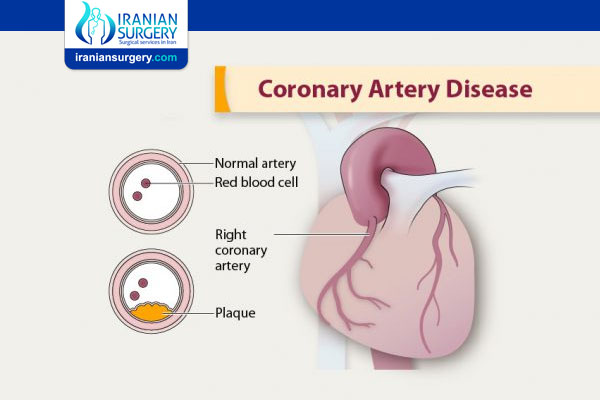Coronary Artery Disease Symptoms
Coronary Artery Disease Symptoms
Coronary artery disease develops when the major blood vessels that supply your heart become damaged or diseased. Cholesterol-containing deposits (plaques) in your coronary arteries and inflammation are usually to blame for coronary artery disease.
The coronary arteries supply blood, oxygen and nutrients to your heart. A buildup of plaque can narrow these arteries, decreasing blood flow to your heart. Eventually, the reduced blood flow may cause chest pain (angina), shortness of breath, or other coronary artery disease signs and symptoms. A complete blockage can cause a heart attack.
Because coronary artery disease often develops over decades, you might not notice a problem until you have a significant blockage or a heart attack. But you can take steps to prevent and treat coronary artery disease. A healthy lifestyle can make a big impact.
Coronary Artery Disease Symptoms
If your coronary arteries narrow, they can't supply enough oxygen-rich blood to your heart — especially when it's beating hard, such as during exercise. At first, the decreased blood flow may not cause any symptoms. As plaque continues to build up in your coronary arteries, however, you may develop the following coronary artery disease signs and symptoms:
. Chest pain (angina). You may feel pressure or tightness in your chest, as if someone were standing on your chest. This pain, called angina, usually occurs on the middle or left side of the chest. Angina is generally triggered by physical or emotional stress. The pain usually goes away within minutes after stopping the stressful activity. In some people, especially women, the pain may be brief or sharp and felt in the neck, arm or back.
. Shortness of breath. If your heart can't pump enough blood to meet your body's needs, you may develop shortness of breath or extreme fatigue with activity.
. Heart attack. A completely blocked coronary artery will cause a heart attack. The classic signs and symptoms of a heart attack include crushing pressure in your chest and pain in your shoulder or arm, sometimes with shortness of breath and sweating.
Women are somewhat more likely than men are to have less typical signs and symptoms of a heart attack, such as neck or jaw pain. And they may have other symptoms such as shortness of breath, fatigue and nausea. Sometimes a heart attack occurs without any apparent signs or symptoms.
When To See a doctor?
If you think you're having a heart attack, immediately call 911 or your local emergency number. If you don't have access to emergency medical services, have someone drive you to the nearest hospital. Drive yourself only as a last option.
If you have risk factors for coronary artery disease — such as high blood pressure, high cholesterol, tobacco use, diabetes, obesity a strong family history of heart disease — talk to your doctor. Your doctor may want to test you for coronary artery disease, especially if you have signs or symptoms of narrowed arteries.
About Iranian Surgery
Iranian surgery is an online medical tourism platform where you can find the best cardiologists and cardiac surgeons in Iran. The price of coronary artery disease treatment in Iran can vary according to each individual’s case and will be determined by an in-person assessment with the doctor.
For more information about the cost of coronary artery disease treatment in Iran and to schedule an appointment in advance, you can contact Iranian Surgery consultants via WhatsApp number 0098 901 929 0946. This service is completely free.
Source:
https://www.mayoclinic.org/diseases-conditions/coronary-artery-disease/symptoms-causes/syc-20350613


